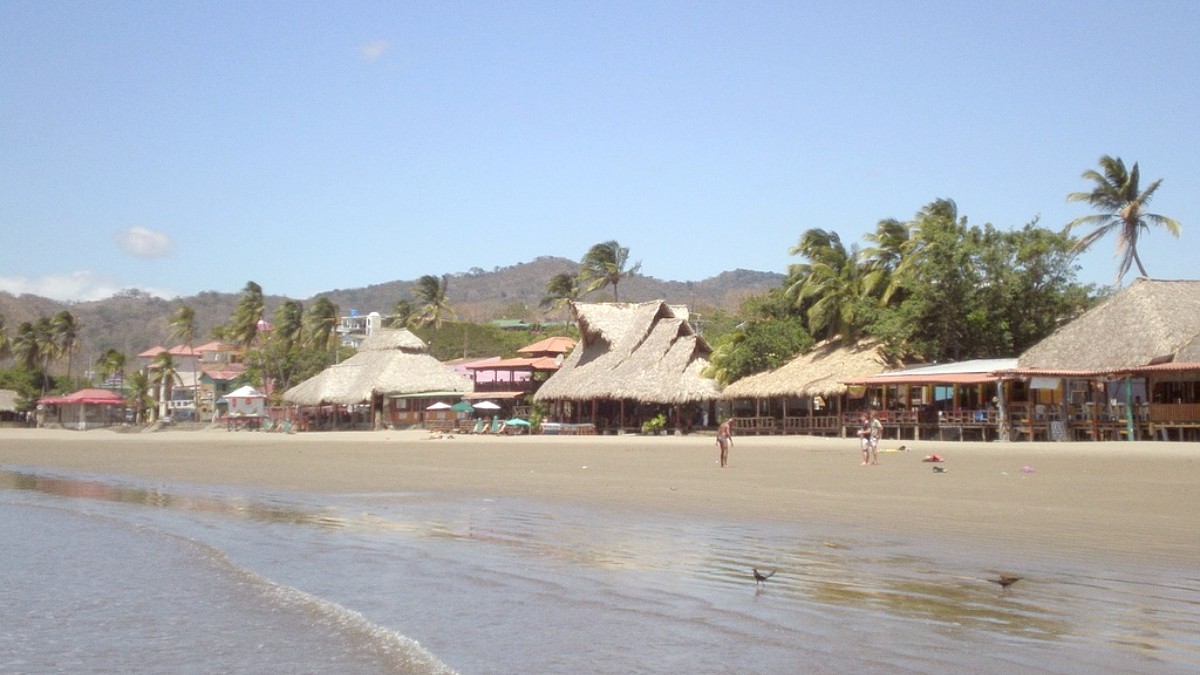
Southwestern Nicaragua, Nicaragua
The dry season (November to April) brings abundant sunshine, low humidity, and consistent offshore winds. These winds, known as "papagayo winds," make for ideal conditions for surfing, keeping waves clean and well-formed. Temperatures during the dry season range from 25°C to 32°C (77°F to 90°F), offering warm, comfortable days. Rainfall is minimal, assuring clear skies for beach activities and sunsets.
The wet season (May to October), also known as the "green season," brings higher humidity and typically afternoon rains. These rains are often short, tropical downpours followed by sunshine. Temperatures stay warm, ranging from 24°C to 30°C (75°F to 86°F).
Most nationalities, including citizens of the United States, Canada, European Union member states, the United Kingdom, Australia, and New Zealand, do not need a pre-arranged visa for stays up to 90 days. They generally get a tourist card upon arrival. This makes entry simple.
Your passport should be valid for at least six months past your planned departure date from Nicaragua. It is good to carry a printout or digital copy of your flight itinerary showing your departure from Nicaragua. This shows your intent to leave the country within the permitted stay. Immigration officials might ask for proof of adequate funds for your stay.
Policies can change, so verify the latest information.
Often included in airfare, otherwise payable separately.
Departure tax of ~US$3 frequently included in flight price.
If departing by land, you might pay it separately at the border.
No specific health-related entry rules at this time.
Required if arriving from a country with Yellow Fever transmission risk.
Always look at the latest travel advisories from your government's foreign affairs department.
The official currency is the Nicaraguan Córdoba (NIO). US Dollars are widely accepted in tourist businesses, but change often comes in Córdobas, sometimes at less favorable rates. ATMs exist in the town center; use them during business hours in secure locations. Notify your bank of your travel plans. Credit cards gain acceptance at larger hotels and some restaurants, but cash (NIO or USD) frequently finds preference for smaller purchases.
Budget Traveler (Hostel dorm, street food, local transport): US$25 - US$45 per day. Mid-range Traveler (Mid-range hotel/guesthouse, mix of local/tourist restaurants, some tours): US$50 - US$100 per day. Luxury Traveler (Boutique hotel/resort, fine dining, private transport, multiple excursions): US$150+ per day.
US$8 - US$15
US$3 - US$7
US$10 - US$20
US$30 - US$50
US$2 - US$4
Your well-being matters when traveling. San Juan del Sur is generally viewed as safer than larger Nicaraguan cities, but petty crime, like pickpocketing and bag snatching, happens.
A Yellow Fever vaccine is needed if you arrive from a country with risk. Speak with your doctor 4-6 weeks before your trip for recommended vaccinations (Hepatitis A, B, Typhoid, etc.).
San Juan del Sur features a basic health clinic for minor issues. For serious emergencies, transport to Rivas or Managua might be needed. Pharmacies exist for common medications. Emergency services are few.
Keep this information easy to reach, both digitally and on a physical card. Verify your policy covers planned activities, like surfing.
San Juan del Sur presents choices for every budget, from backpackers to luxury travelers.
Eat at "Comedores": Local eateries offer authentic and affordable meals, a fine way to experience local cuisine on a budget.
Use Local Transport: Choose local "chicken buses" for inter-city travel instead of more expensive tourist shuttles. Within San Juan del Sur, walk when possible or use moto-taxis for short distances.
Choosing budget-friendly accommodation like hostels or guesthouses with shared facilities can drastically cut daily spending. Many offer a social scene too.
Hostel dorm beds cost US$8-US$15, private rooms US$20-US$40.
Boutique hotels and resorts start at US$100, impacting budget.
Eating at local 'comedores' or cooking your own meals can greatly lower food expenses. Avoid overly touristy restaurants for daily meals.
Local comedor meals cost US$3-US$7, offering authentic taste.
Fine dining meals can exceed US$25, a splurge for special occasions.
Prioritize free or low-cost activities like beach relaxation and town exploration. For surfing, consider daily board rentals rather than buying a board.
Jesus de la Misericordia Viewpoint entry is US$2-US$3.
Boat tours and sunset cruises are US$30-US$70, budget for these.
| Category | Item | Cost (USD) |
|---|---|---|
| Accommodation | Mid-range Hotel Room | US$50 - US$100 |
| Meals | Mid-range Restaurant Meal | US$8 - US$20 |
| Activities | Surf Lesson | US$25 - US$50 |